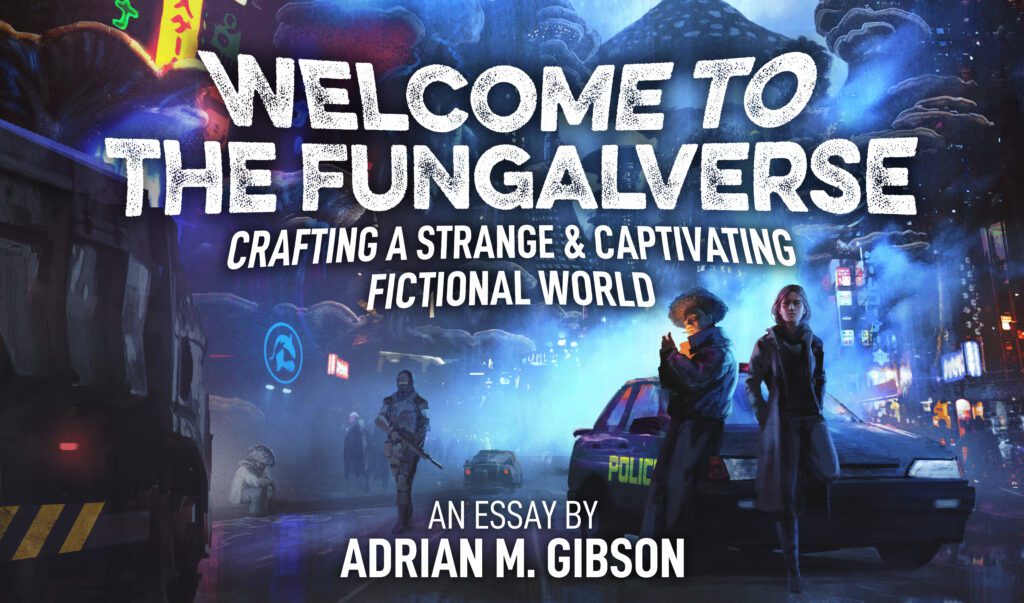
Welcome to The Fungalverse, an essay exploring SFF worldbuilding through the lens of fungi.
This essay is part of the Mushroom Blues virtual book tour—click here to check out the full tour. NOTE: This is approx. a 10-15 minute read.
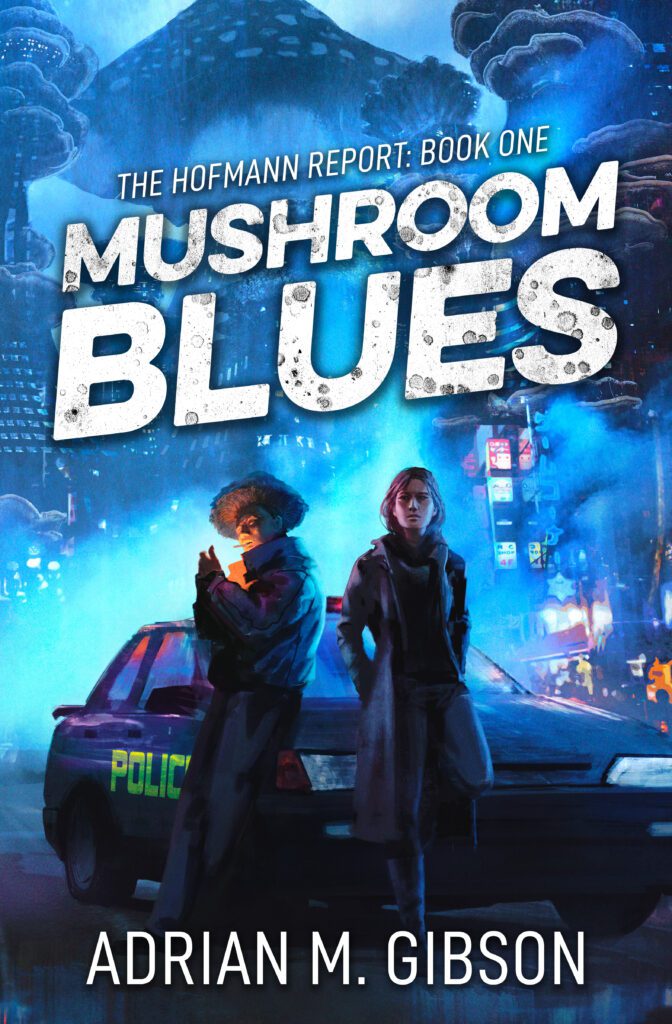
🍄 BOOK INFORMATION 🍄
Book/Author: Mushroom Blues (The Hofmann Report #1) by Adrian M. Gibson
Cover Artist: Felix Ortiz | Instagram | Artstation
Typography/Cover Design: Adrian M. Gibson
Genre: Science Fiction / Mystery / Police Procedural / Dystopia / Fungalpunk
Release Date: March 19th, 2024
Available formats: Paperback, hardcover, eBook, audiobook

Worldbuilding is one of my favorite parts of writing fiction. Of course, the term “worldbuilding” is debated and hated, but that semantic battlefield is not relevant to what I’m discussing here. Instead, I want to focus on the immense freedom that comes through the process of gathering disparate interests and influences and incorporating them into a wholly unique fictional world. And while freedom is conceptually liberating, it can also be a dangerous path for creatives with little self-control.
The weeks and months and years I’ve spent in The Fungalverse (my shared fictional world of fungi and mushroom-headed people) have taught me a lot about the magic and the pitfalls of worldbuilding. Beyond that, it showed me how important it is to bring your truest, nerdiest, weirdest self into your worlds. Question is: How true? How nerdy? How weird? Well, allow me to delve deeper, exploring these ideas through the moldy lens of The Fungalverse.

To build a world is to be unfiltered. Raw. Experimental. There is an inherent chaos to crafting fictional worlds, and in that chaos you can begin to parse out the elements that will bring order and structure to a story. It is magnificent to see what madness a mind can unleash upon a page, but, like any good magic system, there are always consequences when using magic. In the case of worldbuilding, the real magic comes from understanding those consequences.
Now, using this magic system analogy, I’m going to dissect my experiences creating and writing in The Fungalverse.
When I first came up with the idea for my shared universe, it started out as a fictional travelogue: A nameless outsider (basically, an avatar for the reader) exploring a veritable mushroom kingdom, discovering the wonders of a world inhabited by fungal people. It was going to be a way for me to explore utopian ideas of how life in our real world could be, as well as how fungi could play a part in the salvation of planet Earth. While this initially captivated my attention and consumed my imagination, I quickly understood how difficult it would be to come across as engaging instead of preachy.
Much like the balance of power in magic systems, the beginnings of The Fungalverse left me struggling with the problem of wanting to address everything, everywhere, all at once. I wanted to tackle big questions like human ethics, climate change, our relationships with nature and technology, the organization and development of societies, communities and cultures, the mutability of our biology, and the ways in which ideas can spread—but ultimately, those were very lofty and very unwieldy goals.
For instance, early on in the creation of The Fungalverse, I was thrilled that I finally had an expansive creative opportunity to express my lifelong love for mushrooms. It brought back memories of childhood, exploring forests and stumbling across fungi, or poking at slimy fruiting bodies in my parents’ backyard. This drove me into a vortex of research, both online and books. I bought foraging guides and a fungal encyclopedia, and I was consumed by the non-fiction work of writers like Paul Stamets and Terence McKenna. This period of research fueled ideas of mycological architecture, agriculture, materials and technology. It seeped into the very biology of the fungal people, and how they symbiotically merged with fungi in the first place. I also spent countless hours illustrating/sketching fungal people, mushroom varieties, and scenes to get a sense of how it all fit together. On one hand, I was tackling the fundamentals of this world, but on the other, I was indulging way too fucking much and. Not. Writing. Enough.
And therein lies the dangerous path of worldbuilding. Yes, it is a beautiful, magical experience to create a world from whole cloth, filling it with expansive ideas and hopes and desires of a world that could be. But the truth of the matter is, the more you cram in there—the more time you spend detailing every single aspect of your world—the less time you spend actually focusing on what is most important for readers: Showing interesting characters doing interesting things in an interesting world. Who really cares about all of the minute intricacies of a society? Who gives a shit about X number of dynasties or rulers when they don’t have any tangible impact on the story itself? That’s the worst kind of exposition and infodumping, and it’s only useful background information for you, the author, not the reader.
After my initial, overwhelming jaunt in the mushroom kingdom, I ditched the idea of a “travelogue” altogether. But do you know what stuck? MUSHROOMS, MYCELIUM, MOLD! This was the base mycelial structure of the world, the idea that distant, isolated ancestors of humans had symbiotically merged with fungi to become a race of mushroom-headed fungal people. That was fucking cool and unique. That was interesting and a foundation I could build an exciting story around. And that was where weirdness came into play.

Many of us have a conflicted relationship with the word “weird”—I know I do. For me personally, it brings back bad memories from childhood. The hobbies I adored and still adore—reading SFF, doodling comics, pretending I was a knight, armed with a stick sword and running around the forest—often resulted in other kids classifying me as “the weird one.” Sure, I played sports, but I didn’t care about them. I was very competitive, too, but not because I cared about winning. Rather, I cared more about justifying my weirdness as normal, because to me these were the things that I loved. How could that deem me any different?
As I grew older, that nagging need to justify my weirdness became less about external competitiveness and more internalized—a competition with myself. To prove to myself that I could be who I wanted to be. To express my deepest interests in ways that would satisfy my creativity and imagination, but also catch other people’s attention, such that they would say, “That’s really cool.” And you know what? As I’ve progressed deeper into adulthood, I’ve come to some pretty groundbreaking personal realizations.
We are all connected in ways that human beings never could have imagined. Of course, not all of those interactions are meaningful or palpable. Often times, they can leave us feeling like steaming piles of crap who don’t deserve anything. That’s the double-edged sword of instantaneous, global communication. But, the Internet has also shown that so many of us are—deep down in the strange depths of our minds and hearts—really nerdy people.
Seriously, think about it. This essay is being published on a sci-fi/fantasy/horror book blog, comprised of book lovers from around the world. The people who read this blog are also book lovers. We all came together to bask in our shared love of books! And how many other niche nerd communities exist out there? Remember all the “cool kids” you saw and despised growing up? Turns out, they were actually huge into Japanese anime shows. Now, they’re chatting about that stuff on Reddit, or they have five freakin’ tattoos of Sailor Moon characters permanently etched on their skin.
Speaking of tattoos, that is the medium that broke me out my shell of discomfort and self-judgment. When I started tattooing in 2015, I had no idea what I was getting into. I was living in Berlin, and my whole life at that time was a series of experiments. Yes, I had a background in illustration and graphic design, so that was a boon. But there was something just as enticing about pressing ink into skin and creating permanent art as writers experience with worldbuilding. It’s addictive, the possibilities are endless … but once again, it’s a dangerous path.
Tattoos showed me that limitations are necessary in creativity, regardless of the medium. Biology works in strange ways, tattoos fade and skin cells suffer from the dire fate of entropy—much like a story can suffer from being bloated with worldbuilding and a huge variety of other ailments. Yet, there was something that always rose to the epidermis as a key factor, something that made tattooing so captivating to me, but also my clients: Weirdness.
It was through tattoos that I discovered how much of our personal sense of expression can be channeled through what many others might deem weird. Be it the most niche passions that few other people ever know about, or the people, places, pets, etc. that hold intense value to us. This could also take the form of nostalgia, from the books and movies and anime we love, or remembrances from childhood. Essentially, all of these things are expressions of us and our true selves. And this truth is vital, regardless of the medium.
So, if I could express an individual client’s love for Studio Ghibli or Pokémon or Game of Thrones or their favorite cat growing up, could that kind of expression not also be applied to stories? It was there that I began to understand, the reason all of the stories I grew up with stuck with me is because of how weird they were. Except, in those cases, the weirdness was a reflection of the individual authors, pouring their obsessions and souls onto the page through the medium of words.
The majority of my favorite authors, past and present, have been those who dove headfirst into the strangest parts of their imaginations: Philip K. Dick, Adrian Tchaikovsky, and Jeff VandeerMeer, to name a few. (New Weird, anyone?) These are authors who have been unafraid to express the odd, transcendent and mysterious as much as the mundane and familiar.
But let’s look at a more pervasive and popular author: J.R.R. Tolkien, author of The Hobbit, The Lord of the Rings trilogy and the many tales of Middle Earth. Those books and that world are absolutely brimming with Tolkien’s deepest fascinations. (But, unlike my specific obsession with fungi, his happened to have been mythology and language, among many other things.) Think of his approaches to geography and place, or words and names, or the uncanny-yet-captivating nature of creatures like hobbits, ents, orcs and elves. All of that is Tolkien’s weirdness leaking out in a very purposeful way, and now we see it as iconic. We remember and embrace the lingering power of his stories.
It was this line of thinking that it dawned on me: Why not embrace the weirdest aspect of the fictional world I had created? I could expand The Fungalverse to encompass various stories and series across multiple time periods. Stories that are more engaging, blending my weirdness with genres like mysteries, thrillers, police procedurals and more. Stories with intersecting characters and nods to different books. There could be lessons to pull from the original mushroom kingdom travelogue era, even if the world itself had become more of a myco-dystopia than a myco-utopia. Perhaps that shift was a result of the difficulties I’ve faced since then. But if life has taught me anything, it’s that the most profound lessons are often discovered in the darkest and most dire of circumstances. And, like a mushroom sprouting after a turbulent storm, light and learning can begin to take shape as the darkness recedes.
One example of this is my concept of the fungal network, or fungalnet. This appears in Mushroom Blues, and will have a large part to play in future Fungalverse stories. It was a concept that I’d played around with a lot but couldn’t get quite right. At first, it was too nebulous—a super soft magic system, basically—where the fungal people could communicate via some ill-defined form of brain-to-brain communication. Then, it became too detailed, like the midi-chlorians in Star Wars, where I went too deep into the biology and functionality of it.
It was during the drafting and editing stages of Mushroom Blues, though, that the pieces started to fit together. I understood that I had to find the right balance between explanation and mystery. At the same time, I began to incorporate body horror elements (think hive minds, mycelium creeping into orifices, and memory hallucinations) that displayed the power of the fungalnet, but would also entice the reader with overarching subplot mysteries. How did they communicate with one another? What was the broader extent of the fungalnet’s capabilities? How could it be used by fungals, but also exploited by their human oppressors?
When writing, these are the moments that give me goosebumps. It’s incredible how creativity can take shape like this and stimulate the mind so deeply, and that is just one example of how me getting weird made the story so much richer. And it made me feel so damn good. The weirder, the better, in my mind.

Much like weird, “colonize” is an icky, loaded term. But, after writing Mushroom Blues, spending so much time in The Fungalverse, and researching all things mycological, I have a new appreciation for the word—from a fungal perspective, of course. Whereas human colonization is attributed to death and the destruction of cultures and societies the world over, mushrooms take on colonization in a different way. Yes, there is consumption involved, where a dying log is digested by mycelium and its fruiting bodies, for example. But, unlike human colonization and its inherent greed, the goal of fungal colonization is growth—death and decay make way for life and renewal. Such is the way of nature, far removed from the avarice of human ambition.
Oddly enough, the way mycelium spreads reminds me a lot of stories, ego, and ideas. For those who don’t enjoy sci-fi, fantasy and other fictional genres, it often has to do with the inability or unwillingness to suspend disbelief. That suspension is vital to enjoying fiction, as it allows readers to embrace the impossible and the unknown. It’s also vital to storytellers, who spends weeks, days, months, and years crafting fictional worlds filled with fictional characters.
But the most important aspect is how that hard work can impart valuable life lessons. The Bible and other religious texts spread so far because of the parables and moral lessons they have imparted through stories. Those stories are often very strange, but they are also memorable and timeless. Sci-fi and fantasy also do this, using the framework of fictional circumstances to explore the human condition and spread ideas. Stories, like mycelium, can colonize us. And the lessons hidden with the hyphae of a story’s words, characters, and situations can then stick with us for a long time, encouraging us to propagate those lessons and our love for those stories to other people.
With this in mind, I think of reading and storytelling as a sort of ego death. This is a concept that stems from psychedelic circles, where the consumption of large quantities of psychedelic mushrooms, LSD, DMT, etc. can lead to the disintegration of one’s own sense of self. But like mushrooms and the cycle of death, consumption, and life, that ego decay is an opportunity for extraordinary renewal. To perceive the world in new ways, to overcome past traumas, and to reinvigorate one’s spirit in relation to all that surrounds us. We are then far more willing to connect with others and share what we have learned and what we love.
For me, entering into fictional worlds—whether by writing or reading—involves exactly this kind of ego dissolution, such that you can suspend your rationality and sense of self enough to absorb imagined relationships, reactions, personalities, circumstances. All of that absorption accumulates into more openness, more understanding, and more connection. Reading, then, is essentially an exercise in empathy, as is storytelling.
Whether your work is sci-fi or fantasy, new weird, horror or anywhere in between, every author has the opportunity to infuse themselves directly into their stories. What makes you weird is what makes you unique, so why not give your stories that same potency? The result will be a story that rings more true and genuine to both the reader and the writer. What better way to enjoy the worldbuilding and writing process than infuse it with your truest self? And what better way to colonize the minds and imaginations of readers, such that your story will stick with them for the rest of their life?
Much like consuming mushrooms and writing in The Fungalverse have colonized and fueled my own creativity, so too can every story colonize any individual’s mind. A story has the power to better humanity, by building empathy one reader at a time. Fictional worlds, therefore, can act like fungi. So, be bold, be weird, and know that whatever you write, you will find an audience.
Welcome to The Fungalverse.
🍄 ABOUT THE AUTHOR 🍄
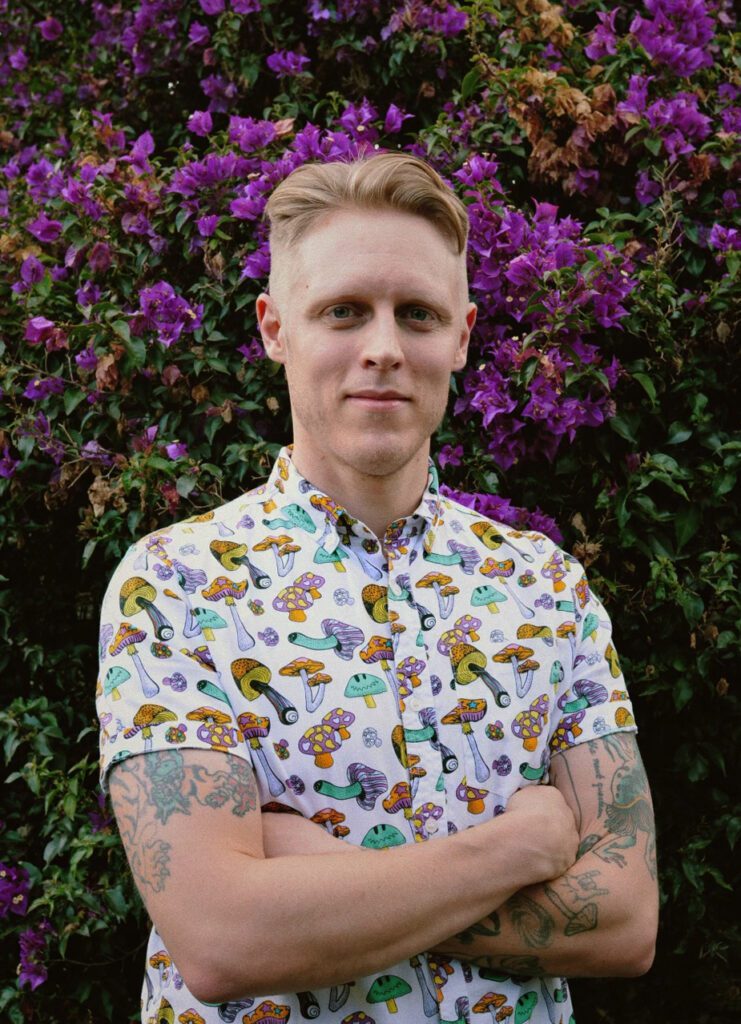
ADRIAN M. GIBSON is a Canadian author, podcaster and illustrator (as well as occasional tattoo artist). He was born in Ontario, Canada, but grew up in British Columbia. He studied English Literature and has worked in music journalism, restaurants, tattoo studios, clothing stores and a bevy of odd jobs. In 2021, he created the SFF Addicts podcast, which he co-hosts with fellow author M. J. Kuhn. The two host in-depth interviews with an array of science fiction and fantasy authors, as well as writing masterclasses.
Adrian has a not-so-casual obsession with mushrooms, relishes in the vastness of nature and is a self-proclaimed “child of the mountains.” He enjoys cooking, music, video games, politics and science, as well as reading fiction and comic books. He lives in Quito, Ecuador with his wife and sons.
Mushroom Blues is his debut novel.
🍄 ‘THE FUNGALVERSE REVIEW’ NEWSLETTER 🍄
Sign up to receive ‘A TALE OF FISH & FUNGI’ novella in FEBRUARY 2024! Subscribe to Adrian M. Gibson’s mailing list to receive a monthly newsletter featuring the latest happenings in Adrian’s life, writing updates, events and podcast appearances, the newest episodes of SFF Addicts podcast, original art, special promos and more! SIGN UP HERE.
As well, FREE digital copies of The Fungalverse novella ‘A Tale of Fish & Fungi’ will be offered to subscribers with the Feb. 2024 newsletter.
🍄 SOCIAL LINKS 🍄
Website: https://adrianmgibson.com/
Twitter: https://twitter.com/adrianmgibson
Instagram: https://www.instagram.com/adrianmgibson/
Facebook page: https://www.facebook.com/adrianmarcgibson
SFF Addicts podcast: https://linktr.ee/SFFAddicts
SFF Addicts Patreon: https://www.patreon.com/sffaddictspod
YouTube: https://www.youtube.com/c/fanfiaddict
Online Store: https://adrianmgibson.com/shop

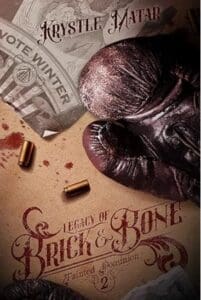
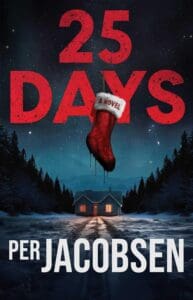
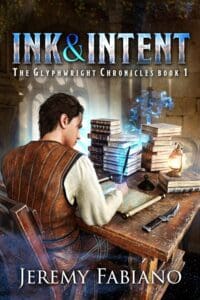
Wonderful piece. Really inciteful and meta in a welcoming way. :~)